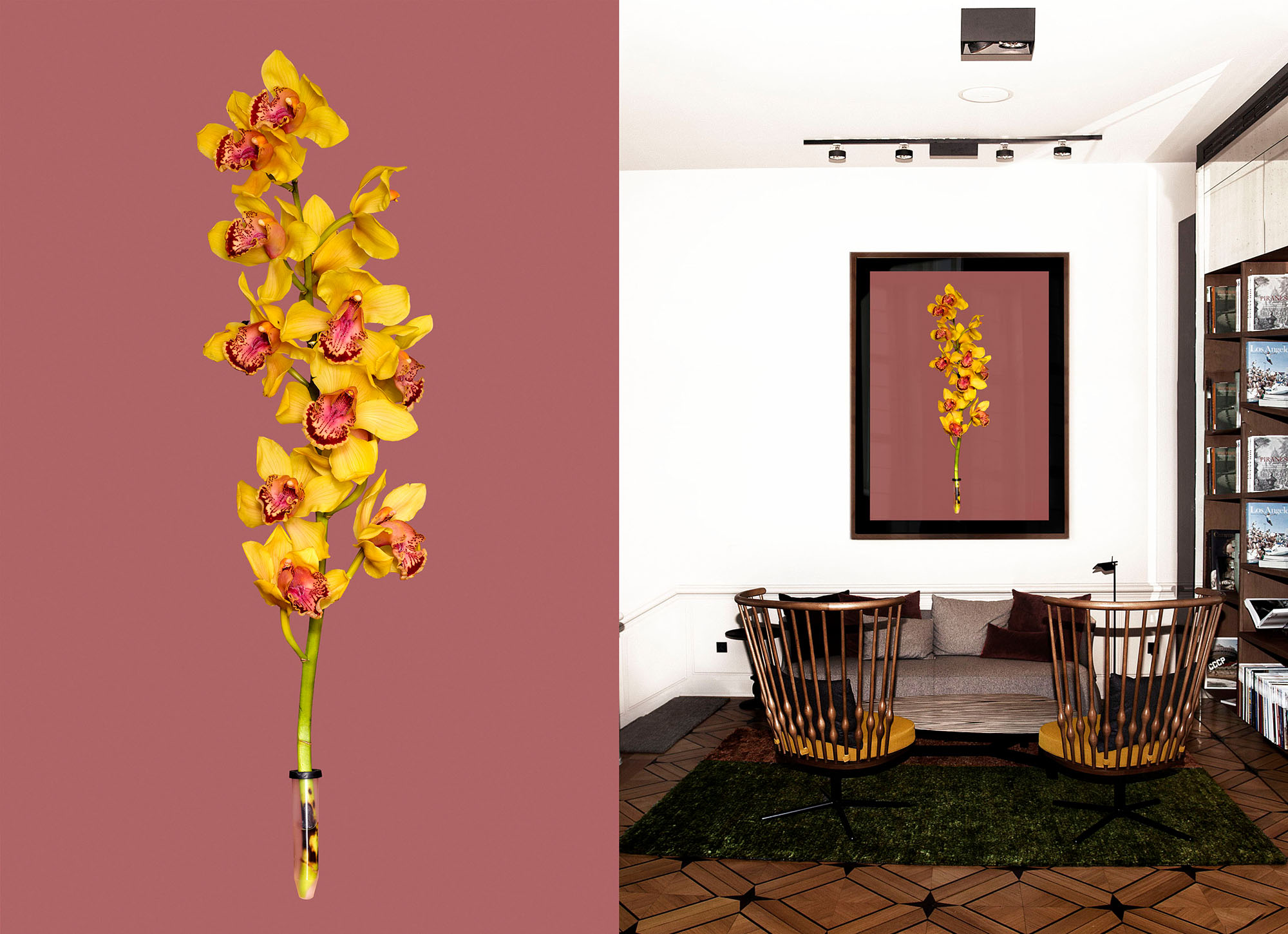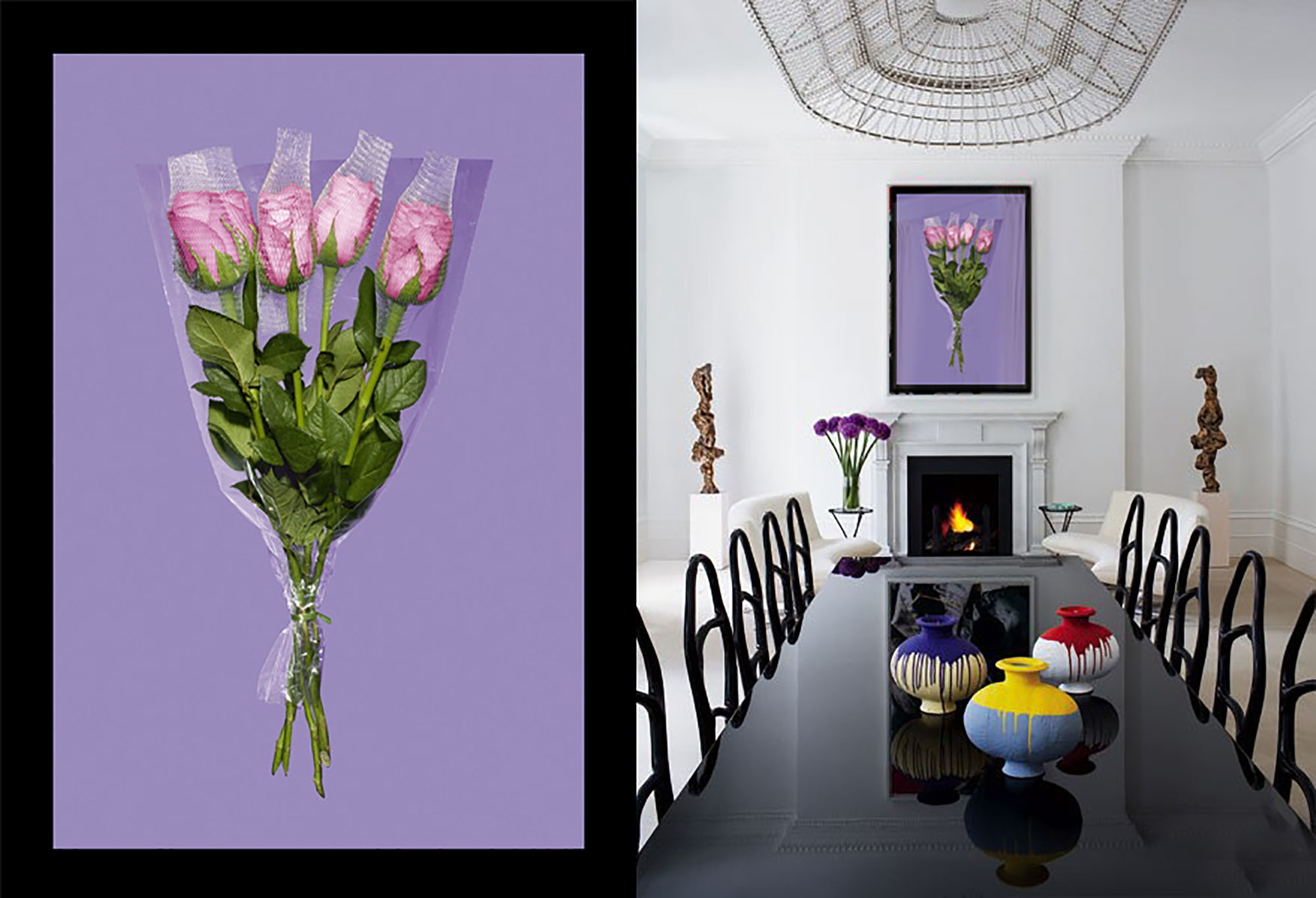MY PLEASURE TO SERVE YOU
MY PLEASURE TO SERVE YOU
Winkhaus ist hocherfreut, uns mit einer Serie von Blumenbildern zu beglücken.
Denn Blumen, so scheint es, dienen uns einzig zu diesem Zweck. Ihre Beliebtheit ist epochen- und kulturübergreifend ungebrochen, ihr Ruf tadellos. Sie sind frei von Reibungsfläche und Provokation. Wir benutzen sie zur Dekoration und verschenken sie als Zeichen der Aufmerksamkeit, der Wertschätzung, der Liebe und nicht zuletzt auch aus Einfallslosigkeit, weil wir wissen, dass die Wahrscheinlichkeit, mit Blumen auf Ablehnung oder Kritik zu stoßen, gen Null tendiert.
Winkhaus stellt deshalb mit dieser Serie auf den ersten Blick eine fast schon utopische Harmonie zwischen Künstler und Betrachter her, einen hundertprozentigen Konsens, den sie mit dem Titel „My pleasure to serve you“ noch unterstreicht.
Doch sind diese Bilder keine Verneigung vor dem prachtvollen Zyklus des Lebens und auch keine Darstellung reiner, schmerzfreier Schönheit. Winkhaus hat sich den Blumen als symbolträchtigem Ur-Sujet gewidmet und sie zu ihren Objekten gemacht. Das Resultat sind mächtige und vielschichtige Arbeiten, deren beunruhigende Schönheit die Blumen aus ihrer klassischen Rolle herausreißt. Dafür hat sie gänzlich auf eine Inszenierung der Blumen verzichtet und handelsübliche Sträuße in ihrem Originalzustand abgelichtet. Sie sagt dazu: „Meine Intension war es nicht, die Blume in ihr Licht zu setzen, so dass sie zum mapplethorpe’schen Ereignis wird, sondern sie so zu belassen, wie sie uns angeboten wird.“ Ohne Schatten wirken die Sträuße fast zweidimensional, die Tiefe der Bilder überlässt die Künstlerin so ausschließlich dem Auge des Betrachters. Die Schönheit der Blüten wird weder in Szene gesetzt, noch konterkariert. Wir stehen deshalb vor exakt den Blumen, die wir täglich sehen und kaufen können. Allseits bekannt und plötzlich befremdlich.
Und so sind die Blumen von Winkhaus keine Darstellung der Blüte als faszinierendes Sexualorgan wie bei Robert Mapplethorpe. Sie sind auch keine Abbildung jahreszeitenunabhängiger Opulenz wie bei einem auf Blumenstillleben spezialisierten Hofmaler des 17.Jahrhunderts. Und sie sind auch kein Ausdruck eines kurzen, optimistischen Moments, den van Gogh hatte, als er seine Sonnenblumen malte, während er in der Provence auf Gauguin wartete.
Die Blumen von Winkhaus sind das, was uns derzeit zu gefallen scheint.
Ihre Farbenpracht und Größe ist so betörend wie sich das für Blüten gehört – wie Insekten müssen wir näher kommen und bestehen auf sofortigen Direktkontakt.
Schnell stoßen wir dann auf Details wie das Reagenzglas aus Plastik, in dem die tropische Orchidee feststeckt, die Klarsichtfolie, die sich um die Gerbera legt, die Gummis um die erschlaffenden Stängel der Tulpen und die Plastiknetze um die Köpfe der als edel und stolz geltenden Rosen.
Keines dieser Accessoires wurde arrangiert, wodurch sie einen noch schärferen Kontrast zu allem bilden, was man sonst mit Blumen assoziiert. Ihre Haltbarkeitshelfer arbeiten gegen ihre Vergänglichkeit, ihr in Kunststoff verpackter Massenauftritt wiederspricht der Einzigartigkeit, die uns an allem Natürlichen fasziniert. Und trotzdem hat sich die Blume in unserem kollektiven Bewusstsein ihren guten Ruf als Geschenk der Natur, das wir bevorzugt weiterverschenken, bewahrt. Ebenso bleibt der Sog, der von diesen Blumenbildern ausgeht, auch nach dem Erkennen ihrer bizarren Darreichungsformen erhalten.
Die fast reflexartige Liebe, die wir Blumen entgegen bringen, spiegelt Winkhaus in dieser Serie wieder, indem sie mit ihr spielt, um anschließend den Ball zurück ins Feld des Betrachters zu werfen. Die Idee, Blumen per se schön zu finden, wird nicht auf den Kopf gestellt, pervertiert oder in Frage gestellt, sondern zeigt Blumen so, wie man sie im Moment konsumiert. Winkhaus präsentiert ein Zeitgeistdokument auf Basis eines uralten Wunsches an die bildende Kunst: Die unvergängliche Abbildung des derzeit Schönen.
Das ist es, was wir wollen. Das ist es, was wir bekommen. Wunderschön.
Vielen Dank für die Blumen.
Text: Jacqueline Thomae
Winkhaus is very happy to be able to please you with a series of pictures featuring flowers.
Because apparently flowers only exist for that purpose. Their popularity is continually present throughout all cultures and ages.They have an excellent reputation.They are free from fiction and provocation.
We use them as decorations and give them as presents, as a sign of courtesy, of appreciation, of love and not least because of not being able to think of anything else because we know that the likelyhood of refusal or criticism are next to null. Thats the reason why Winkhaus presents a nearly utopian harmony between the artist and the observer with this series, a one hundred per cent concensus and emphasises exactly that with this piece entitled Its my pleasure to serve you . Nevertheless these pictures do not bow to lifes colourful cycle and are not representative of pain free beauty. Winkhaus deals with the flowers as a symbolic old theme and has transpired them into her own objects. The results are powerful and multifacetted works whose disturbing beauty remove the flowers from their classical role. She has not arranged the flowers in any particular fashion and photographs normal bunches of flowers that are available commercially.She states that it wasnt my intention to portray the flowers in such a light that they would become a sort of Thorpian event, moreover to leave them the way that they are, the way they are presented to us Without shadow the flower appear to be nearly two dimensional, the depth of the pictures are neither being set in scene nor are thex being counteracted. Thats why we are standing in front of these very flowers,that we can see and are able to buy every day. Very familiar and all of a sudden very strange Winkhaus'es flowers do not represent the blossom as a facinating sexual organ in the manner that Robert Mapplethorpe flowers do.That are not pictures of oppulence that rely on the season of the year, like the flower still lifes of a seventeenth court artist.They are also not the expression of a short optimisticmoment that Van gogh would have had as he painted his sunflowers in the Provence as he waited for Gaughin.
Winkhauses flowers are what we seem to like just in that moment of time. Their colourful bouquet and size are so intense as the case should be with flowers,that we like insects,have to come closer and insist on having direct contact. We soon discover details like the plastic test tube in which the tropical Orhid is bound with a reciding plastic foil wrapped around the stems of the tulips and also the plastic net around the heads of the roses which would normallly be consdered noble. None of these accesoiries have been prearranged and are in stark contrast to all the pictures we normally associate with flowers.Their preservability helpers work against their perishability,their artificial appearence packed in synthetic material contradicts their uniqueness that facinates us with everything thats natural.But nevertheless the flower has manged to retain its reputation as a present of nature in our collective consciousness.The attraction that emanates from these pictures remains and thus receives it's presentation form.
The almost reflective love of flowers that we have mirrored in this series by Winkhaus in as far as she plays with them, only to throw the ball back to the observer.the idea of finding flowers beautiful per se is not being turned on it's head, nor is it being doubted or perverted moreover it displays flowers as they are being consumed.
Winkhaus presents a contempoary document on the basis of an ancient wish of the fine arts: The immortal image of contempoary beauty.
So thats what we want.And thats what we get. Beautiful.
Many thanks for the flowers.









